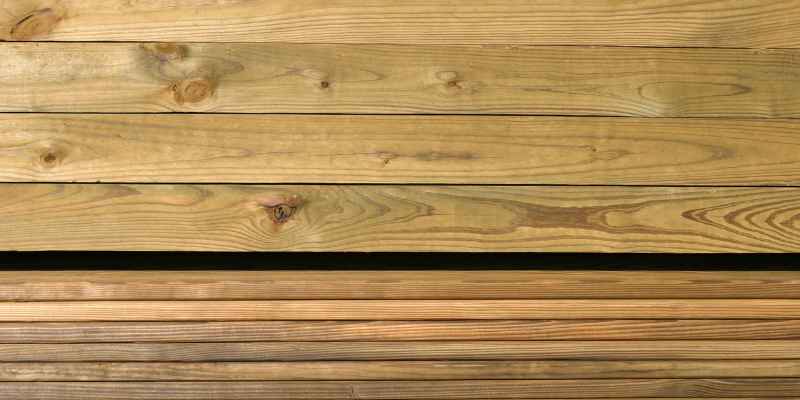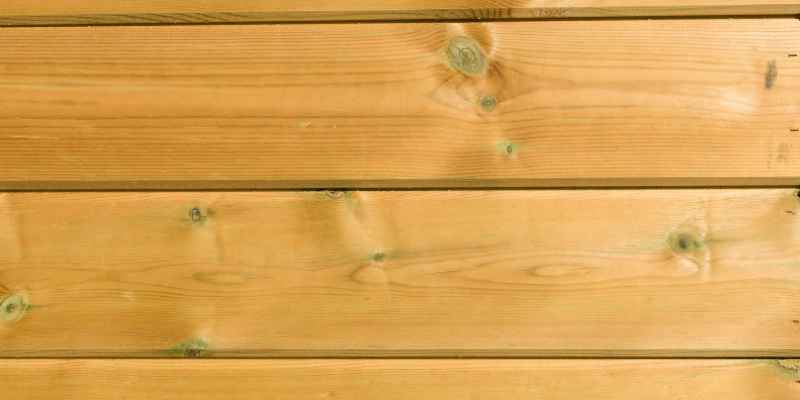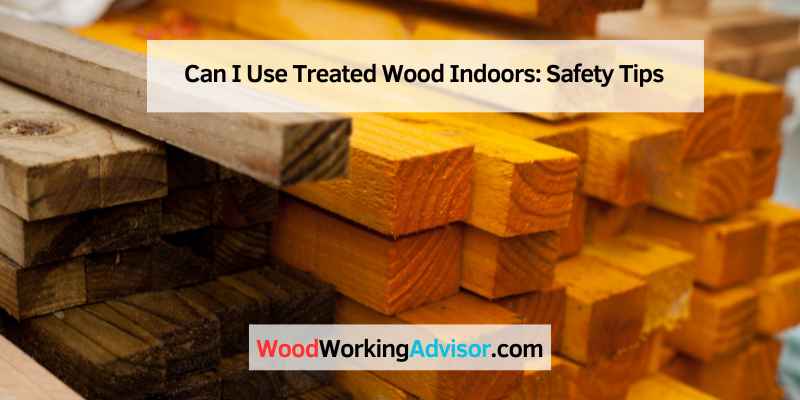Yes, you can use pressure-treated wood indoors. It’s commonly used as base plates for basement walls in contact with concrete and as sill plates on top of foundation walls.
When considering indoor projects that require sturdy and durable wood, pressure-treated lumber can be a reliable choice. It is frequently utilized as base plates for basement walls and sill plates on concrete foundation walls within homes. However, it is crucial to understand when and where to avoid using pressure-treated wood, especially in areas where children and pets spend time regularly, such as play sets and raised garden beds.
Opting for naturally rot-resistant woods like cedar can offer a safer alternative in these instances. Thus, while pressure-treated wood can be suitable for interior applications, it is essential to weigh the potential health risks and choose the appropriate wood for the intended purpose.
Safety Concerns With Treated Wood
Pressure-treated wood can be used indoors for certain applications, such as base plates for basement walls or sill plates on top of concrete foundation walls. However, it is important to avoid using it in areas where pets and children spend time regularly, as it may pose a risk to their health.
Untreated wood is generally recommended for indoor use.
Toxicity Of Treated Wood
Treated wood, often used for outdoor projects such as decking and fences, is treated with chemicals to protect it from rot and insect damage. However, the use of treated wood indoors raises concerns about the potential toxicity of these chemicals.
The most commonly used chemical treatment for wood is chromated copper arsenate (CCA), which contains arsenic, chromium, and copper. These chemicals can leach out of the wood over time and pose a risk to human health. It is essential to understand the potential toxicity of treated wood before using it indoors.
Risk Factors For Indoor Use
When considering the use of treated wood indoors, it is crucial to be aware of the risk factors involved. The primary concern with treated wood is the potential for chemical leaching. This leaching can occur when the wood comes into contact with moisture, such as through spills, condensation, or high humidity levels. When chemicals leach out of the wood, they can contaminate the air and surfaces in the indoor environment. This poses a risk to anyone who is exposed to the chemicals, especially for prolonged periods.
It is important to note that the risk of toxicity varies depending on the specific chemicals used in the treatment process. Some treatment methods, such as the use of alternative chemicals or non-toxic treatments, may reduce the risk of toxicity. However, it is essential to research and understand the specific treatment method used for the wood before considering its indoor use.
Alternatives To Treated Wood
Concerns about the potential toxicity of treated wood have led to the development of alternative options for indoor projects. These alternatives offer a safer and more environmentally friendly choice for those looking to use wood indoors. Some popular alternatives to treated wood include:
1. Untreated Wood: Using untreated wood eliminates the risk of chemical leaching and ensures a healthier indoor environment. However, it is important to note that untreated wood may be susceptible to rot and insect damage over time, so proper maintenance is necessary.
2. Naturally Rot-Resistant Wood: Certain types of wood, such as cedar and redwood, have natural properties that make them resistant to rot and insect damage. These woods are an excellent alternative to treated wood, as they do not require chemical treatments.
3. Engineered Wood Products: Engineered wood products, such as plywood and particleboard, are made from wood fibers and adhesives. These products offer a reliable and stable alternative to solid wood and can be used in a variety of indoor applications.
When choosing an alternative to treated wood, it is essential to consider the specific requirements of your project and the desired durability and longevity of the material. Consulting with a professional or knowledgeable supplier can help you make an informed decision and ensure the safety of your indoor environment.
Common Uses Of Treated Wood Indoors
Is treated lumber safe to use indoors? You can use pressure treated wood inside. It is commonly used as base plates for basement walls when in contact with concrete. It is also used as a sill plate on top of concrete foundation walls. Those are its two most common applications inside the home.
Base Plates For Basement Walls
Base plates for basement walls are essential for securing the wooden framework to the concrete base. Pressure-treated wood works well for base plates as it provides protection against moisture and potential rot when in contact with the concrete foundation.
Sill Plates On Concrete Foundation Walls
Sill plates are positioned on the top of concrete foundation walls to support the framework of the structure. Using pressure-treated wood for sill plates ensures durability and longevity, especially in environments where moisture ingress is a concern.
Guidelines For Using Treated Wood Indoors

Drying And Preparing Treated Wood
Before using treated wood indoors, ensure it is thoroughly dried. Use a moisture meter to check the moisture content, which should be less than 19%. Air-dry the wood in a well-ventilated area for at least 2 weeks before use to minimize the risk of mold or mildew.
Sealing And Finishing Treated Wood
Apply a high-quality wood sealant specifically designed for treated wood to protect it from moisture and decay. Prior to finishing, sand the wood to create a smooth surface, allowing the sealant to penetrate effectively. Choose finishes suitable for indoor use that won’t release harmful chemicals into the air.
Proper Ventilation
When using treated wood indoors, ensure proper ventilation to minimize the off-gassing of chemicals. Use fans or open windows during and after construction to promote air circulation. Consider adding an air purifier to remove any lingering fumes and improve indoor air quality.
Longevity Of Treated Wood Indoors
The longevity of treated wood indoors is a crucial consideration for anyone planning to use it in their home. Understanding the factors that affect its lifespan, as well as the necessary maintenance and preservation methods, can help ensure that the treated wood remains durable and safe for indoor use.
Factors That Affect Lifespan
The longevity of treated wood indoors is influenced by various factors. Exposure to moisture, temperature fluctuations, and the type of treatment used are primary factors affecting its lifespan. Additionally, the quality of the wood and the level of protection against decay and pests also play a significant role.
Maintenance And Preservation
Proper maintenance and preservation methods can extend the lifespan of treated wood indoors. Regular inspections for signs of decay or damage, application of appropriate sealants, and controlling the indoor environment to minimize moisture are crucial for preserving the integrity of the treated wood.
When To Avoid Using Treated Wood Indoors
Treated wood can be used indoors for specific purposes, such as base plates for basement walls and sill plates on concrete foundation walls. However, it is not recommended for areas frequented by pets or children, including play sets and raised garden beds, due to potential health risks associated with long-term exposure.
Using untreated wood for indoor projects is a safer option.
Areas Where Pets And Kids Spend Time
Construction in areas frequented by pets and children like play sets, decks, and raised garden beds should steer clear of treated wood.
Health Risks Of Treated Wood
Treated wood poses health risks due to chemicals present that can leach out over time and be harmful when exposed.
Alternatives To Treated Wood Indoors
When it comes to using wood indoors, treated wood may not always be the best option due to its potential toxicity. Fortunately, there are alternatives that provide both durability and safety. Let’s explore some of the alternatives:
Naturally Rot-resistant Woods
If you’re looking for a natural option that can withstand moisture and resist rotting, consider using naturally rot-resistant woods. These woods have the ability to naturally repel insects and fungi, making them ideal for indoor applications.
Some popular examples of naturally rot-resistant woods include:
- Cedar: Known for its natural oils and resistance to decay, cedar is a popular choice for indoor projects like furniture, trim, and cabinets.
- Redwood: With its inherent resistance to decay and insects, redwood is another great option for indoor applications such as flooring, paneling, and window frames.
- Teak: Renowned for its durability and resistance to moisture, teak is often used for indoor furniture and flooring.
Composite And Engineered Wood Products
If you’re seeking a wood alternative that offers both strength and versatility, composite and engineered wood products are worth considering. These products are composed of a mixture of wood fibers and synthetic materials, resulting in a durable and environmentally-friendly option.
Here are some common composite and engineered wood products:
| Product | Advantages |
|---|---|
| MDF (Medium-Density Fiberboard) | – Smooth and uniform surface – Resistant to warping and twisting – Suitable for cabinetry and shelving |
| Plywood | – Strong and stable – Versatile for various indoor applications – Available in different grades for different purposes |
| Particleboard | – Budget-friendly option – Suitable for non-structural indoor projects – Easy to paint or laminate |
| Composite Decking | – Resistant to moisture and insects – Low maintenance – Mimics the appearance of real wood |
By opting for these alternatives to treated wood, you can create a safer and more eco-friendly indoor environment without compromising on aesthetics or functionality.

Frequently Asked Questions On Can I Use Treated Wood Indoors
Is Treated Lumber Safe To Use Indoors?
Yes, pressure-treated wood can be used indoors for specific applications like base plates and sill plates. It’s commonly used in contact with concrete in basement walls. Avoid using it where pets and kids play to reduce health risks. Opt for natural rot-resistant wood like cedar instead.
How Long Does Treated Wood Last Indoors?
Pressure treated wood can be used indoors for certain applications such as base plates for basement walls or sill plates on top of concrete foundation walls. It is safe to use pressure treated wood indoors, except for cutting boards and countertops.
Where Not To Use Pressure Treated Wood?
Pressure treated wood should not be used in areas where pets and children spend time regularly, such as play sets, decks, and raised beds in gardens. It is best to use non-treated wood in these locations to avoid potential health risks.
Do I Need To Treat Wood For Indoor Use?
Yes, you can use pressure-treated wood indoors, like for base plates and sill plates in contact with concrete.
Conclusion
Pressure treated wood can be safely used indoors except for cutting boards and countertops. It’s commonly utilized for base plates and sill plates inside homes when in contact with concrete. Opting for untreated wood indoors is advisable in areas where pets and children frequent to avoid risks.


